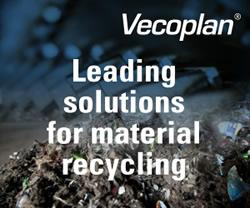Siemens Surges but Vestas Wind Systems Remains Top Wind Turbine Installer in 2014, says GlobalData
Vestas Wind Systems continues to lead global wind turbine installations in 2014, with just over 6,053 Megawatts (MW) of capacity ----Meanwhile, Canada's top turbine installer, Siemens, climbs into second place, with capacity installations of around 4,990 MW
LONDON, UK (GlobalData), 10 March 2015 - Danish wind turbine manufacturer Vestas Wind Systems (Vestas) has maintained its position as the world-leading wind turbine installer in 2014, having achieved global capacity installations of just over 6,053 Megawatts (MW), according to research and consulting firm GlobalData.
The company's latest findings also show that of the world's top five wind turbine installers in 2014, Siemens has climbed three positions since 2013 into second place. As well as installing around 4,990 MW of capacity last year, Siemens also proved itself the top wind turbine installer in Canada, which is a major market for the company.
Following its entry into the top five Original Equipment Manufacturers (OEMs) in 2013, Chinese wind turbine supplier Xinjiang Goldwind Science & Technology (Goldwind) has held onto third position in the 2014 rankings, with installations of 4,728 MW. Goldwind also continues to enjoy its status as the top wind turbine installer in Asia.
GE Power & Water was the leading OEM in 2012, but disappeared completely from GlobalData's top five rankings in 2013 due to a reduction in US wind turbine installations. However, the company has re-entered in fourth place in 2014, thanks to its global wind capacity installations of almost 4,589 MW.
Meanwhile, German wind turbine manufacturer Enercon slipped from second to fifth place last year, with installations of approximately 3,735 MW.
GlobalData concludes that while Suzlon Group (Suzlon) was another new entrant in the top five wind turbine installers in 2013, claiming fifth place, the company has dropped down in the rankings. Suzlon fell to tenth position in 2014, having installed nearly 1,855 MW of capacity.
Featured Product

